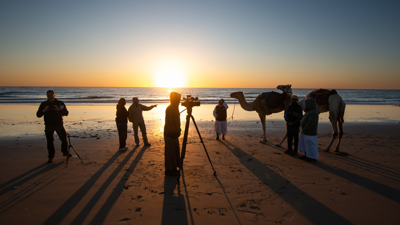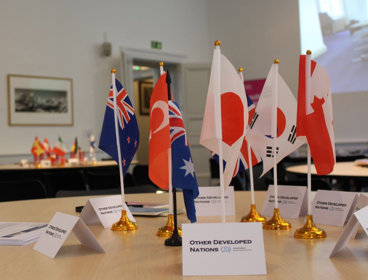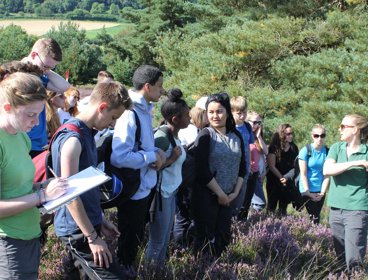Each month, we'll be spotlighting highlights from our educational resource collection, showcasing the work the Education team is doing to facilitate dynamic ways of teaching geography today. This month, discover how we’ve used the case study of Oman to teach about sustainability and biodiversity!
On the southeastern coast of the Arabian Peninsula lies Oman, a country full of fascinating geographical features, rich cultural heritage and a wealth of history. However, due to its proximity to the tropical waters of the Indian Ocean, arid climate and fragile biodiversity, the country is also vulnerable to the impacts of climate change. With such a diverse range of features and vulnerabilities, Oman is an important geographical case study for students.
The Society also has a strong historical connection with Oman; from British explorer Bertram Thomas’ notable expedition in the 1920s to the world’s most intensive study of an arid environment, undertaken by the Society in the 1980s. Added to this, members of the Society’s Education team have been busy over the past six-months creating a range of high-quality, free resources focusing on Oman. On the value of these resources, Rachel Owen, from the team commented: “They underpin the British geography curriculum by exploring the unique landscape of Oman through several key geographical topics including ecotourism, animal adaption, dry environments, international agreements and much more.”
StoryMaps, lesson plans, teacher presentations, pupil activities and podcasts help form this collection of resources examining the opportunities and challenges the country experiences as it strives for a more sustainable future. While threats and concerns are outlined, the resource collection presents the full picture; Oman is improving the local and global environment by putting sustainability at the forefront of their vision.
Through these materials pupils can also engage with the unique landscape of Oman. One example of this is our collection of resources on the Jewel of Arabia expedition where earlier this year, students and teachers were invited to follow the expedition in real time as it travelled from Ras Al Hadd, the most easterly point of the Arab world, to Salalah, the second largest city in Oman. Students were also given the opportunity to ask questions to the expedition team.
“By enabling pupils to directly engage with the expedition team, students could access concepts and places that may otherwise feel far away, bringing to the fore the layer of awe and wonder which geography strives to achieve in everyday learning.” Rachel Owen
As well as being helpful sources of curriculum material, importantly these resources help share positive stories of hope from a geographical region so commonly associated with conflict.
Learning about the global geographical and environmental issues of today can be overwhelming, and teaching about them is no different. Our educational resources have been created to support teaching about these complex topics in schools while cultivating curiosity and creativity amongst students.



